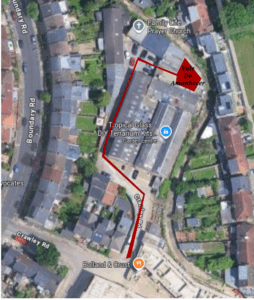The Earth’s neutron zone is a profound concept that has sparked much speculation across religions, philosophies, and theologies throughout history. In popular culture and even in casual conversation in Brazil, the term “astral” often comes up, sometimes in jest to describe psychological states. But what does this term really signify, and how does it relate to the Earth’s neutron zone and the broader concept of invisibility?
Understanding “Astral” and Its Roots
The term “astral” has a rich history. According to the “Grande Dicionário Etimológico Prosódico” by Silveira Bueno (1963), “astral” is an adjective describing a veil that surrounds the soul, drawing from the doctrines of Paracelsus, a 15th-century alchemist and philosopher. Paracelsus posited a relationship between human physiology and celestial bodies, suggesting that parts of the human organism were linked to the stars.
In this context, “astral” refers to both celestial bodies and the subtle veil enveloping the soul. This veil can be perceived as having a neutron-like quality. The distinction between superior astral and inferior astral (or lower astral) indicates different positions within the neutron’s expansive and contractile energy—much like the nucleus and periphery of a neutron.
The Etheric Dimension: A Subtle Fluid
Similarly, the term “etheric” is used to describe a very subtle fluid that physicists acknowledge as spread throughout the universe. This concept aligns closely with the description of the neutron, which embodies subtle, expansive energies. The etheric dimension is akin to the neutron zone in that it represents a non-material yet influential layer of existence.
Semantic Clarification: Astral vs. Spiritual
While “astral” and “etheric” serve as useful adjectives to describe vibrational planes, it’s crucial to understand their limitations. These terms help us navigate the concepts of non-material realms but should not be confused with the actual spiritual realms or vibrational planes of the neutron and anion.
The main challenge lies in differentiating between what is merely invisible and what is genuinely spiritual. The neutron zone, with its contractile and expansive forces, and the anion plane, with its spiritual essence, are distinct from the mere description of invisible or subtle states.
The Neutron Zone and Its Significance
The neutron zone represents a critical layer of the Earth’s energy field. It functions as a mediator between different vibrational states, influencing how we perceive and interact with both material and non-material aspects of existence. Understanding this zone helps clarify why certain phenomena appear invisible or subtle, as they are part of the broader neutron energy field rather than separate spiritual dimensions.
Conclusion: Navigating the Invisible
The Earth’s neutron zone, along with concepts like the astral and etheric planes, provides a fascinating framework for understanding the invisible aspects of our world. By appreciating these terms for their descriptive value and recognizing their limitations, we gain a clearer perspective on the vibrational layers that influence our experiences.
Ultimately, while “astral” and “etheric” offer us ways to describe subtle and invisible realms, it is essential to maintain a distinction between these descriptions and the deeper spiritual and vibrational realities they represent. This nuanced understanding enriches our grasp of the Earth’s energy fields and the broader cosmic context in which they operate.


No responses yet